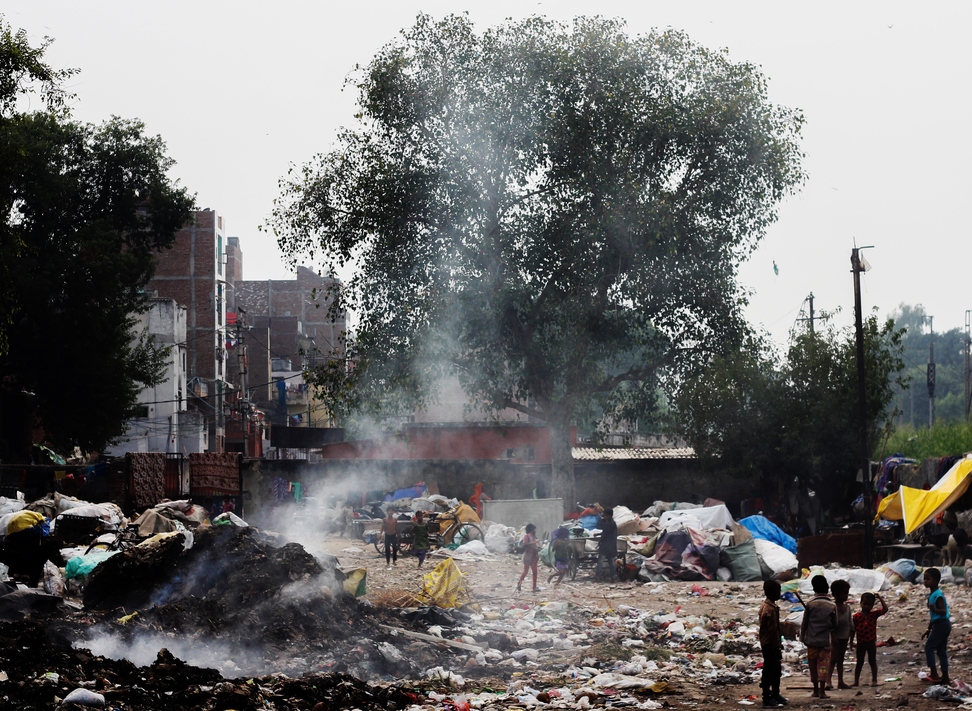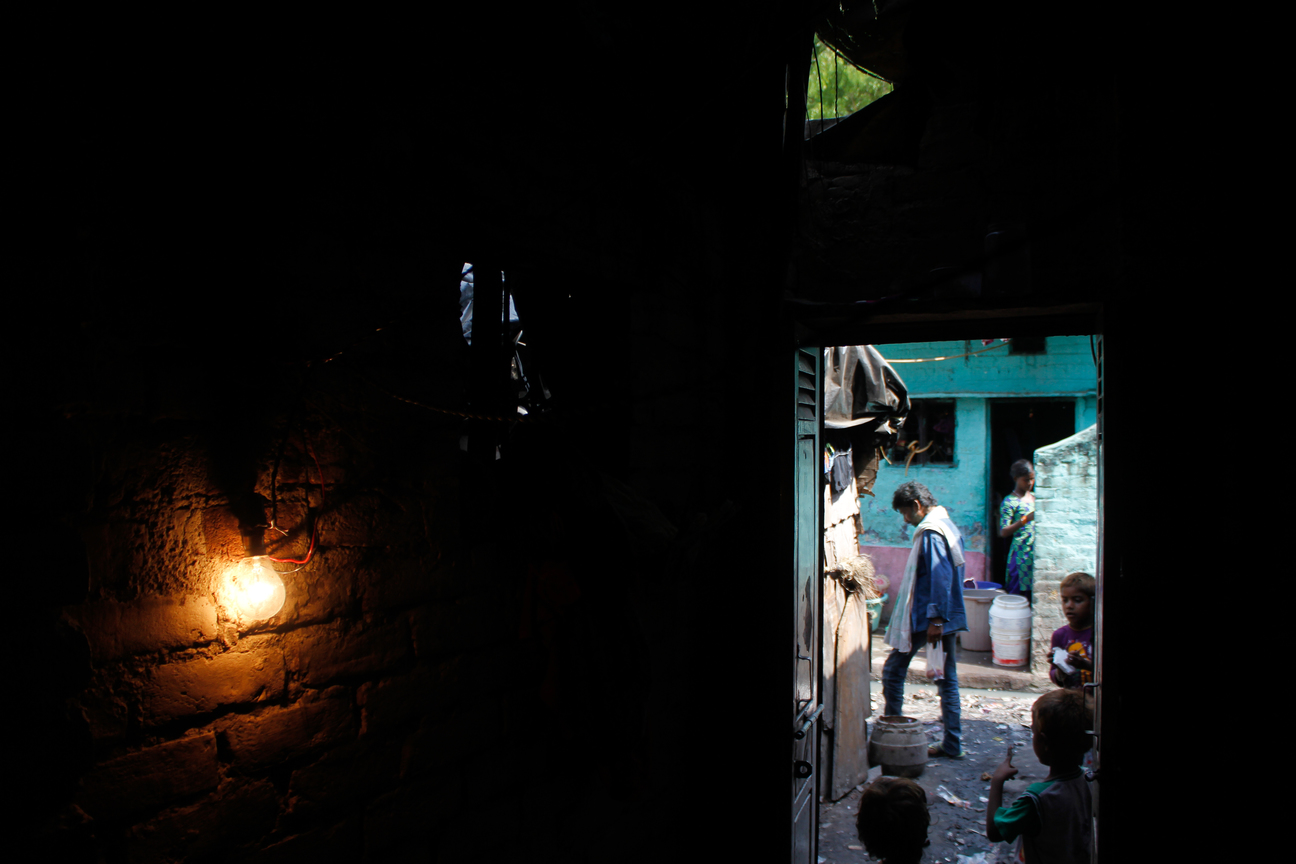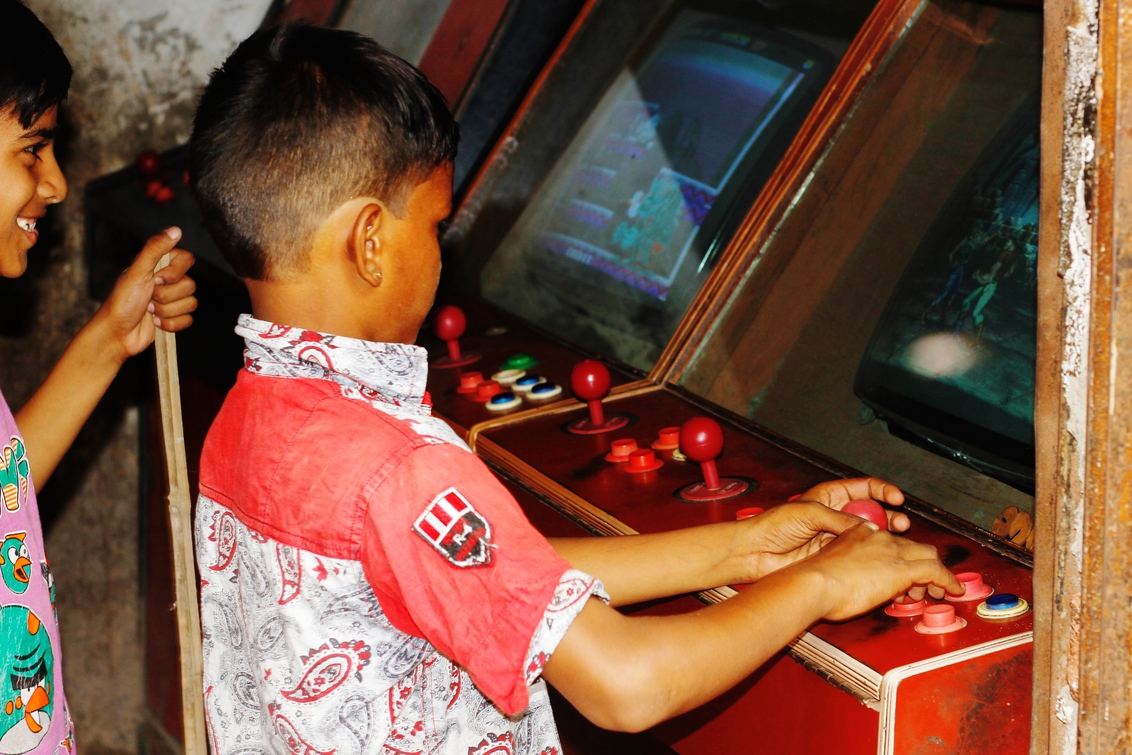

Sonali Verma and photographer Dipnendu Choudhury explore the famed alleys of the Kathputli Colony in New Delhi, only to realise that the magic of its name is long dead and now part of folklore.
It is home to local acrobats and magicians who now work as rickshaw pullers and street vendors. Talented singers and dancers who make a living as domestic workers and famed puppeteers who resort to other meagre jobs during lean times, which is almost the whole year, thanks to our society’s disregard for art and artists. West Delhi’s Kathputli Colony folklore is nothing short of fiction. For a colony that got its name from the folk art of string puppet theatre, the truth has been long decorated by the media—often referred to as a ‘beautiful artist hub’. Ask the three thousand and six hundred families that have lived here for more than forty years, and there is almost nothing they can call beautiful in this place anymore, maybe except their art. But what good is dying art when it can’t fill the ungrateful wretched bellies of a family of five.
Fondly known as Kalakaaro ki basti, Madari colony or Bazeegar Colony, it is tucked beneath the Shadipur depot. On our first visit, we were surprised to find a five-feet tall statue of Ganesha at the very start of the narrow alley that leads to the slum, standing on a temporarily erected wooden stage in a place where there’s hardly any room to walk. The whole community, regardless of their religion and caste, contributed whatever they could to celebrate Ganesh Chaturthi and then Eid. “People from all over the country shifted to the basti years ago and have lived here since. We are a mix of fire-eaters, musicians, conjurers, puppeteers and acrobats from Rajasthan, Gujarat, Maharashtra, Bihar and other states. When we go out, we do not introduce ourselves as belonging to a particular community but as residents of Kathputli Colony”, says Verma Ji, one of the residents of the colony.
But life is tough when the view from your window is only piles of trash, open drains and sewers offering an open invitation for diseases. The narrow lanes are filled with garbage and the stench arising from widespread open defecation, which makes it impossible to move around without flinching.

Garbage Town: The unmistakable stench of garbage and human faeces assault you the moment you enter the once famous colony
Our hopping over the place and trying our best to not step on faeces is a source of amusement for the children of the slum as they immediately run to their tiny homes, giggling and shouting, “American, American!” Evidently, the colony’s most frequented visitors are foreigners from NGOs; it’s not the children’s fault for assuming we’re one of them.
Neither the rain gods nor the government has been merciful on the slum dwellers. Monsoon bid farewell a few weeks ago, before leaving, the colony completely flooded. The water along with all the garbage had entered the concrete slums, creating a havoc. Clearly, the residents haven’t received a lot of help from the authorities “Everyone who comes here promises help. There have been inspections by the government and they promised to get the area cleaned but we have waited in vain for an action”, one of the passers-by tells us. “Why doesn’t Kejriwal spend the taxpayers’ money on the cleanliness of places like this in the city, instead of going to Rome for a three day trip. Why not spend those three days surveying the city? Why not address the problems of your people first?” questions another.
The Colony’s impasse with the Delhi Development Authority (DDA) only adds to their misery. The DDA had promised a fourteen storey building for the slum dwellers in an agreement with Raheja Developers as a part of the redevelopment project of the Kathputli Colony. But in 2014, the Aam Aadmi Party (AAP) alleged a scam by revealing that the Rs. 1000 crore land was sold only for Rs. 6 crore. Most of the residents have shown reluctance in moving to the transit camps in Anand Parbat and Rohini, owing to false promises and lack of sanitation facilities, clean water and electricity. The ones that have shifted, demolished their shanties, selling off the iron, wood and bricks completely. Verma Ji, like most other residents has certain doubts, whether they will be eligible to obtain a flat after the project is completed and the duration for which they will have to stay at the transit camps. Their concerns haven’t been addressed yet.“Ham khud ek kathputli ban kar reh gaye hai. Woh hamein nachaaye jaa rahe hai aur ham naache jaa rahe hai.”, he said. (We’ve all been reduced to puppets. They make us dance and we are obliged to)

Stability First: Most of the residents refuse to move to new government housing fearing change and ironically, lack of sanitation
The mosquito-borne Chikungunya virus has been running a riot in the Indian capital. In one of the shanties, right in front of the heap of garbage lives Vandana and her family of five. Vandana’s eldest daughter, Karishma, is suffering from chikungunya since many days. While she sleeps on the only bed in a room that can be covered in barely three steps, Vandana cooks lunch for her husband. Her youngest child, Prince, stands naked on the door, covered in mud and dirt, playing with broken second-hand toys. Her husband has gone to work. Usually, he performs on weddings and parties, but because business is lean now, he is working as a plumber. Her house, like every other in the basti, does not have a toilet. She and her two young girls have to use the public toilet outside which is never clean. Like all other residents, she too is fed up of the garbage. “The men of the colony removed the sweeper here saying they’ll do the sweeping themselves”, she says. Clearly, they didn’t.
A few steps away from her house is the Bhule Bisre Kalakar Trust, a co-operative representing the artists, where a few men pack dolls in cardboard boxes to be shipped to Dubai for an arts and culture festival. One of them tells us, “When we go abroad to display our art, we have to pay for our own expenses most of the times. Sometimes, there is a profit, sometimes, there is a loss”.
Going deeper into the dingy, narrow paths of the slum, we come across groups of small girls, all dressed in their school uniform of brown pleated skirts and white shirts, flaunting their neatly braided hair. “Hi”, they all say in unison. “How are you?” asks the girl leading the pack. “My name is Kehkasha. Nice to meet you”, she says before blushing and walking away with her girl-gang.
Kehkasha and her friends go to the government school a few kilometres away. They’re the fortunate ones. The rest of them can’t afford school or are not willing to. Those who are willing, are often denied admission in the institute of their choice because of their background. The Pradhan’s daughter, who is a talented artist wanted to learn fine arts in a certain well-reputed college in Delhi University, but was denied an admission on no reasonable grounds. “Ham khud aage badhna chahte hai par hamein koi aage badhne hi nahi deta”, says the Pradhan. (We want to move forward, but no one lets us.)
“Do you study?” We ask a young adolescent girl.
“No, I learn dance,” she says.
The Kalakar Trust in the Colony is a building in a big compound that has two classrooms, a dance theatre, computer centres and a Wi-Fi zone. The twenty five year old trust is a non-profit that works for the artists from low-income groups by providing education, healthcare, ways of income generation and community management. Kuldeep Kaur, the Principal, has been a part of the trust for eighteen years. She and her staff take classes of children between 7 to 14 years of age, by picking a specific topic and teaching them everything related to it. This week’s topic is the Human Body. Today, the children learnt where the human heart is located and its functions. There’s also an awareness camp about dengue and chikungunya for the women of the basti in the afternoon.
Inside the dance theatre are teenage girls practising their dance steps. We request them to show us their dance and they immediately agree. They don’t stop dancing till one of the teachers turns off the music. Pooja, one of the girls says, “We want to perform for others, but we’ve never had the opportunity.” There’s also a computer centre inside where children of all ages learn basic and advanced computer courses. The head of the computer centre, Gurpriya says, some use the centre for accessing Facebook and other websites to market their products.
As we make our way deeper in the slum, the path gets narrower. Spotting the camera in our hands, almost every child we encounter poses for us. “One photo please”, they beg. We oblige.
A few children surround us when they see pens in our hands and request we make stars on their palms. “Come back tomorrow, we will teach you how to knead dough,” they say. There is no talk of magic or folklore, only the banalities of the daily grind. Right outside their shanties, some people sit making Nimbu- Mirchi Totka (The Evil Eye Warder). They’ll sell these to the shopkeepers nearby on Saturday.
Even the slums have not been spared the class demographics.
We pass through an area considered the richest in the slums. You know it’s true, when they have a small room with video gaming consoles. It is not every day that you stumble across a video game parlour in the middle of a place you’d least expect it to be. The children of this part of the slums are dressed in shirts and jeans with sports shoes on.

Favourite Hangout: Children playing in the gaming parlour inside the colony. Children flock to this room all through the day.
Vipul Kalra, a resident of Patel Nagar, has been frequenting the colony since five years. He works with an NGO and knows almost everyone in the area by their names. “When we had just arrived here, the condition was much worse. People weren’t aware of the importance of hygiene and education. My motive has been to spread awareness about these issues”, he tells us. Today is his late father’s ‘shradh’ and he has come to the slum to feed the children to offer his respects. There is a custom of offering food to girls on the eighth and ninth day of Navratri as a mark of respect to Goddess Durga. Vipul says, “I will offer my prayers to the Goddess by feeding the children of the colony and will ask everyone in my area to do the same.”
Arjun is a popular name in the colony. Ask anyone about his whereabouts and he will appear before you in the next few minutes. Arjun, 20, taught himself English and now learns German from the social workers from Germany every morning. He attends tourism class and even teaches some of the students of the slum. Unlike most people who want a way out of the slum, Arjun wants to stay, “and do something for my people.”
He introduces us to his old classmate, Chand, who teaches at the Mahila Shiksha Kendra (Women education centre) there. Women between 18-25 years of age come to her every day to learn computers. “I would’ve shown you the place but the computer has gone for repair”, she says. Sitting next to her is a middle aged woman. When we ask them if we can click their picture, Chand immediately starts doing-up her hair, but the other woman refuses to get clicked. “Aap log internet pe daal doge; mera bhai dekhega toh gussa hoga”, she says. (You will put it on the internet and then my brother will see it and be upset). She speaks in a hushed tone, like she is letting out a secret, which she is, about her husband, who is sick with dengue and is sleeping inside. “He drinks and gambles all day. It’s his profession now,” she says.

An Epidemic: A man sleeps through his fever. Gambling and Alcoholism are problems arising out of loss of livelihood.
As I leave, she asks, “Aap kya karoge hamare liye?” Aate toh bohot log hai, interview leke chale jaate hai. Fir bhi kuch nahi hota. Aap kya karoge jis se hamara faayda ho?”(What will you do for us? Everybody comes here and interviews us. But nothing ever changes. What are you going to do that will help us?)
The residents of the Kathputli Colony are not waiting for a miracle, although they do know that miracles don’t exist. Yet they wait, hoping to be acknowledged someday. And till they don’t, they just make the best of what they have.